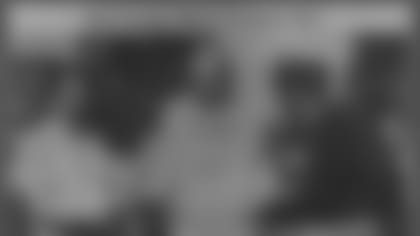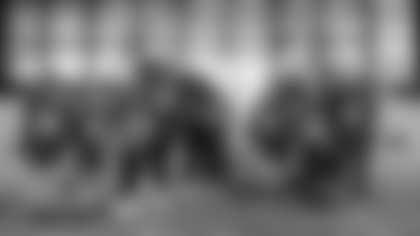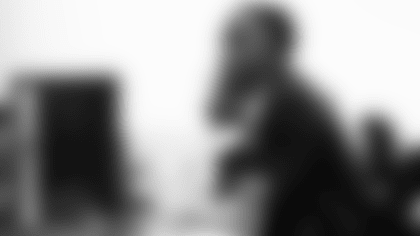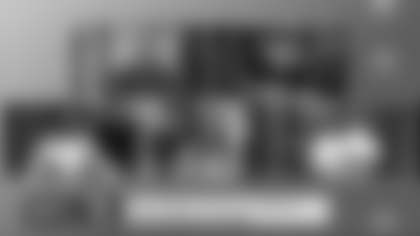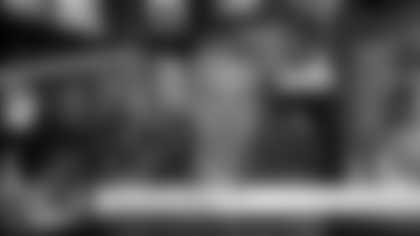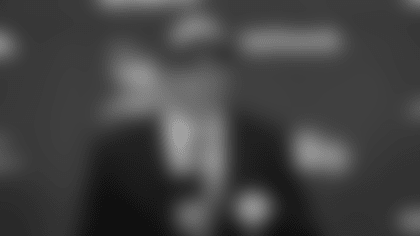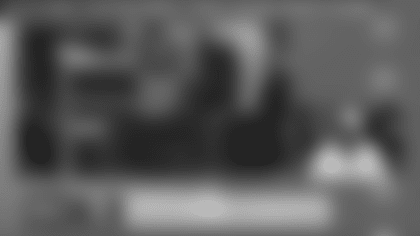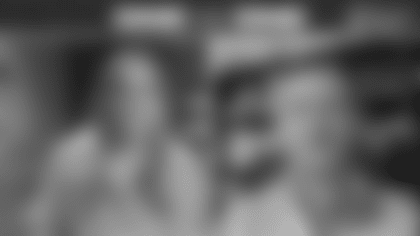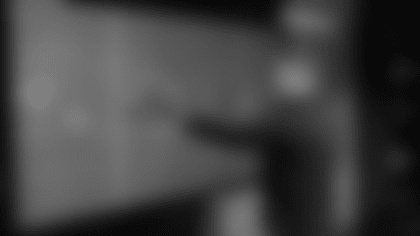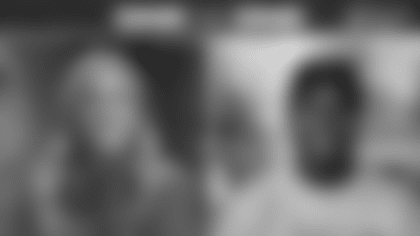By Tom West, For Vikings.com
The Giants have a historical connection to the Upper Midwest from hosting training camps in the region. The club trained at the University of Wisconsin-Superior in 1939, '41, '42, '46, '47 and '48. It was at those camps that a young Bud Grant was first exposed to pro football by taking in the practices as a spectator. In 1952 and '53 the Giants held their training camp at Gustavus Adolphus College in St. Peter.
The following excerpt from the book *Gustavus Athletics: A Century of Building the Gustie Tradition, 1880-1980 *by Lloyd Hollingsworth describes the Giants tenure in St. Peter. The Giants also played a pair of preseason games at Parade Stadium in Minneapolis against Green Bay in 1953 (the preseason opener) and in 1955 against the Baltimore Colts, the fourth of six preseason games the club played that season.
The New York football Giants conducted their preseason training camp on campus in the summers on 1952 and 1953. Among those living and practicing on campus were some well-known names in the sports world: Tom Landry (famed coach of the Dallas Cowboys), Frank Gifford (popular TV sports announcer), Kyle Rote (legendary all-pro), Dick Nolan (coach of several NFL teams), Bill Austin (later to coach the Giants), Al DeRogotis (later to become a well-known sports commentator). Among others well known in their day: Charlie Conerly (QB), Eddie Price (FB), All-Pro tackle Arnie Weinmeister, All-Pro center Ray Wietecha, Tex Coulter, a tackle who doubled as a cartoonist and artist, some of whose Gustavus campus sketches appeared in the New York papers. The coaching staff included: Steve Owen (head coach), Allie Sherman (backfield coach and later head coach), Jim Lee Howell (end coach and later head coach), Ed Kolman (line coach), and Tom Landry (doubled as a defensive back and defensive backfield coach).
The question may well be asked; why would a professional football team choose to train so far away from their home base? At that time there existed a belief among owners and coaches that there was a value in isolation from the distractions of wives, family, girl fiends, and local fans. Also, in the pre-TV era, there was opportunity to turn a profit on exhibition games played in the area not then available to pro football. The Giants traveled from Gustavus to play the Green Bay Packers at Parade Stadium in the Twin Cities and in Milwaukee and the Pittsburgh Steelers in Des Moines. Earlier the Philadelphia Eagles had trained at Grand Rapids and now the Green Bay Packers were training there. The Packers played an intra-squad game at Superior, prompted under the title Fish Bowl. The Giants played intra-squad games at St. Peter, prompted as the Green Giant Bowl and at Austin as the Spam Bowl.
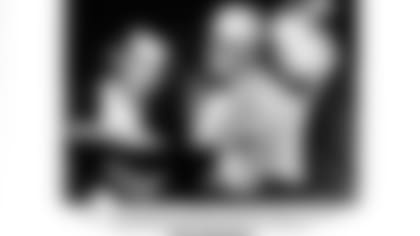
*Lloyd Hollingsworth acted as coordinator between the Giants and the college, providing space for their equipment, arranging transportation, scheduling meals, providing field equipment, supervising locker room and laundry facilities, and setting up an auxiliary training room in Rundstrom Hall where they were housed. Fortunately, the number in camp was less than what is prevalent in practice, but 50 to 60 large pro athletes taxed the small fieldhouse locker rooms, especially on warm, humid August days. Two Gustie football players, Jim Knight and Roger Carlson, were employed to do the laundry and the custodial work in the fieldhouse. Their daily association with the Giants prompted a criticism by some MIAC coaches, implying that they were practicing with the pros. *
Both years that the Giants were on campus, they played an intra-squad game on the Gustavus field. These games were promoted as the Green Giant Bowl by the Le Sueur Company. The fanfare accompanying the games included queens, bands, and honorary coaches, such as Bernie Bierman and "Shorty" McGovern. These games attracted crowds of seven to eight thousand, which required seating around the entire field. Thirty-five percent of the gate was designated to Gustavus athletics for new lights. The first year the game was played under the inadequate original 1929 lights – the first in Minnesota. The second year the new lights were installed, thanks in a large measure to the Giants' contribution. Gustavus business manager and treasurer, Rud Lawson, sought contributions to complete the financing.
Two-a-day practice sessions attracted sizeable numbers of onlookers, which necessitated roping off the sidelines to control the crowd. Holly's children, Lee and Kay, sold soft drinks. As an adjunct to observing practice, and with donated time by the Giant staff, Hollingsworth conducted a free coaches' clinic which attracted many high school and college coaches. Over the ensuing years, these associations with high school coaches proved to be a valuable recruiting asset. The recruiting benefits derived from the clinics proved so valuable that Holly continued them as exclusive Gustie clinics for several years after the Giants departed. Invitations were limited to Gusties and coach friends of Gustavus. They were staffed by Gustie coaches and grads who had established successful coaching reputations. In addition, provisions were made to invite John Roning and Jocko Nelson as guest lecturers for two of the clinics.
After the two years at Gustavus the Giants moved their training camp to Connecticut in order to be closer to their home office. When the Vikings became an expansion team, the Giants recommended the Gustavus site for training. However, by this time some of the practice field had been lost to construction and the size of the training camp squads had outgrown the locker rooms. The inadequacy of practice fields and dressing facilities also prevented the Dallas Cowboys from training at Gustavus. Tom Landry, with favorable recollections of Gustavus, visited campus with general manager Tex Schram, but the day they were on campus happened to be the day a bulldozer began tearing up the practice field as part of the chapel construction. Landry so favored a Minnesota training camp location that when Gustavus facilities were inadequate he chose to train at St. Olaf for two years.
In the years that followed, individuals who were on campus with the Giants said their typical remembrances were of Evelyn Young's food and Green Giant corn on the cob.


